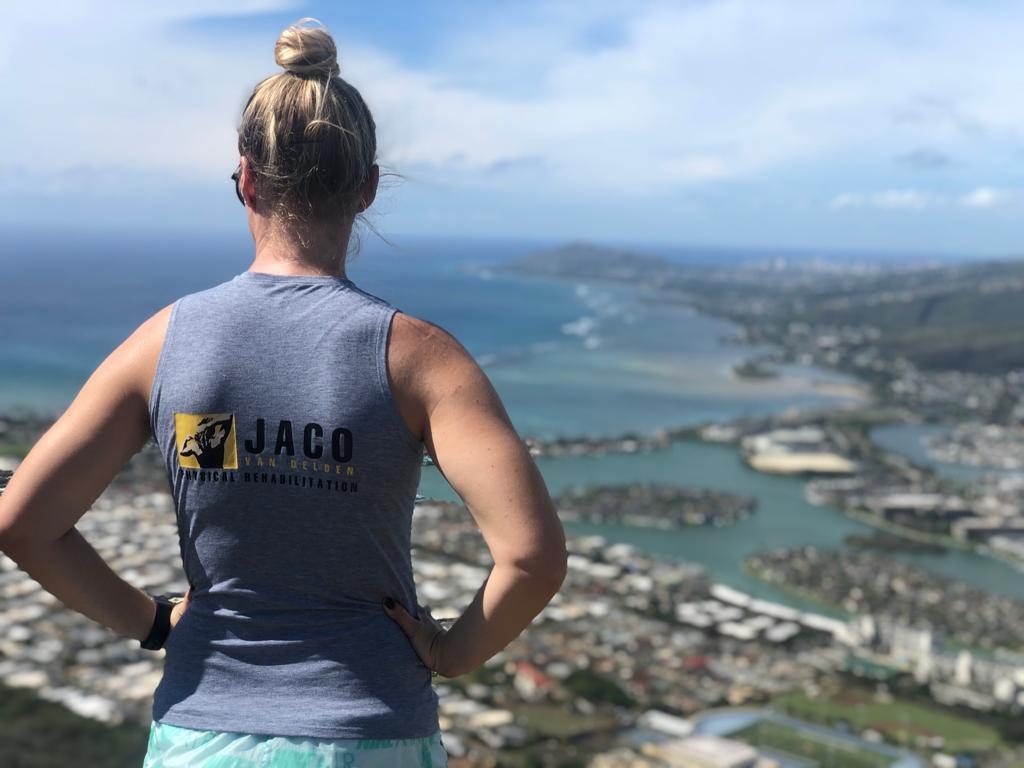
You’ve rehabilitated your injury, but you’re not done yet. You’re just entering a new phase: maintaining progress and getting back to your life.
What does this look like for you?
Generally, you want to make sure you’re incorporating what you’ve learned in physical therapy into your daily life. More often than not, that includes staying active.
Before talking about what happens after therapy, you need to do this first.
Discuss Your Goals
At the beginning of physical therapy, you may recall discussing your personal goals: reaching above your head, clasping your bra strap, or bending down to feed the dog without pain or discomfort.
As important as these goals are, we know that it doesn’t stop there. Reaching above your head turns into placing your luggage in the overhead. Bending down turns into performing yoga poses.
Now that physical therapy has helped you build a mobile and strong foundation, you’re capable of picking up where we leave off. Physical therapy has given you the tools you need to progress toward your personal goals. Don’t worry, your JACO therapist is available for you even after discharge.
As you approach the last few visits of physical therapy, be clear with your future intentions if you haven’t already.
Ask your therapist questions about how to progress on your own. Tell them your plans so that they can direct you on the right path to success.
Then, you’re ready to discharge with confidence!
What Should I Do After Physical Therapy?
Discharge day is not the day to stop working on your health. Use physical therapy as a way to get back to a healthy track, then keep rolling with it. Here’s how.
1. Do Your Home Exercise Program
That’s right… your homework isn’t done yet!
Upon discharge, you should receive a final home exercise program from your therapist. It may include a few final exercises to focus on, stretches to do for relief if aches and pains temporarily return, or even ways to progress your running program.
Your final home exercise program could have a few different purposes, like to:
- Make final progress to your injury rehab
- Maintain your current progress
- Help you reach final personal goals that aren’t able to be addressed in the clinic
Your therapist will include frequency, sets, and repetitions for each exercise so you know exactly what to do on your own.
Before your last session, think about final things you’d like to address in-person as you begin to progress your own program. Ask plenty of questions that will make you feel comfortable transitioning to independence.
2. Commit to Activity by Joining a Gym
Show up and stay active!
Take your home exercise program to the gym and perform it there. Use available equipment to progress weight, distance, speed, or whatever it may be.
For those with chronic pain, staying active is one of the best ways to combat pain. Do what you can, often. (1)
Go with a friend, join a class, or go by yourself – a gym can help you commit further to rehab maintenance and/or continuing general activity. Just be sure to follow progressions outlined by your therapist, if any.
3. Find YOUR Way to Stay Active
Returning to activity is important for your physical and mental wellbeing, no matter your injury.
If your injury stopped you from participating in sport, get instructions from your therapist on how to slowly phase back into it.
If you’ve been inspired to start a new activity, find a group or a mentor who can teach you the ropes.
The only caveat would be any remaining restrictions from your therapist or doctor. Once these are clear and your pains are gone, ease into your goals. Just remember what your therapist taught you!
It Won’t Always Go Smoothly
Don’t expect to progress perfectly. You may hit obstacles along the way.
You might have a temporary regression in pain. Maybe you progressed too quickly. Hey, it happens. Recover for a few days by doing what your therapist taught you, and try again later at a lighter intensity. Listen to your body!
You may not have motivation to do your home exercise program. It’s okay to have off-days. If you can’t do it all, try to pick one that would be useful for you that day. Fit something in so you don’t completely fizzle out. Something is better than nothing.
You may not be progressing as quickly as you’d hoped. Strength and mobility gains take time and consistency. Every step of the way is a journey, and it doesn’t happen overnight. Progress takes patience and a little bit of perspective – remember how far you’ve come.
Don’t Just Stop!
Stay committed to your goals. Don’t stop just because physical therapy stopped!
Use your resources. You have your home exercise program, but you don’t have to only do these at home. Take them to a gym and work on your progressions.
Find the fire to stay active YOUR way. Figure out what motivates you to stay well physically and mentally.
If you need help, your therapists at JACO Rehab is always an email away. Reach out with any questions.
Written by Nicole Hernandez, DPT
References
1. Smith, B. E., Hendrick, P., Bateman, M., Holden, S., Littlewood, C., Smith, T. O., & Logan, P. (2019). Musculoskeletal pain and exercise—challenging existing paradigms and introducing new. British journal of sports medicine, 53(14), 907-912.